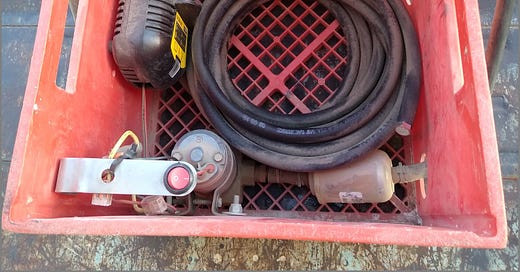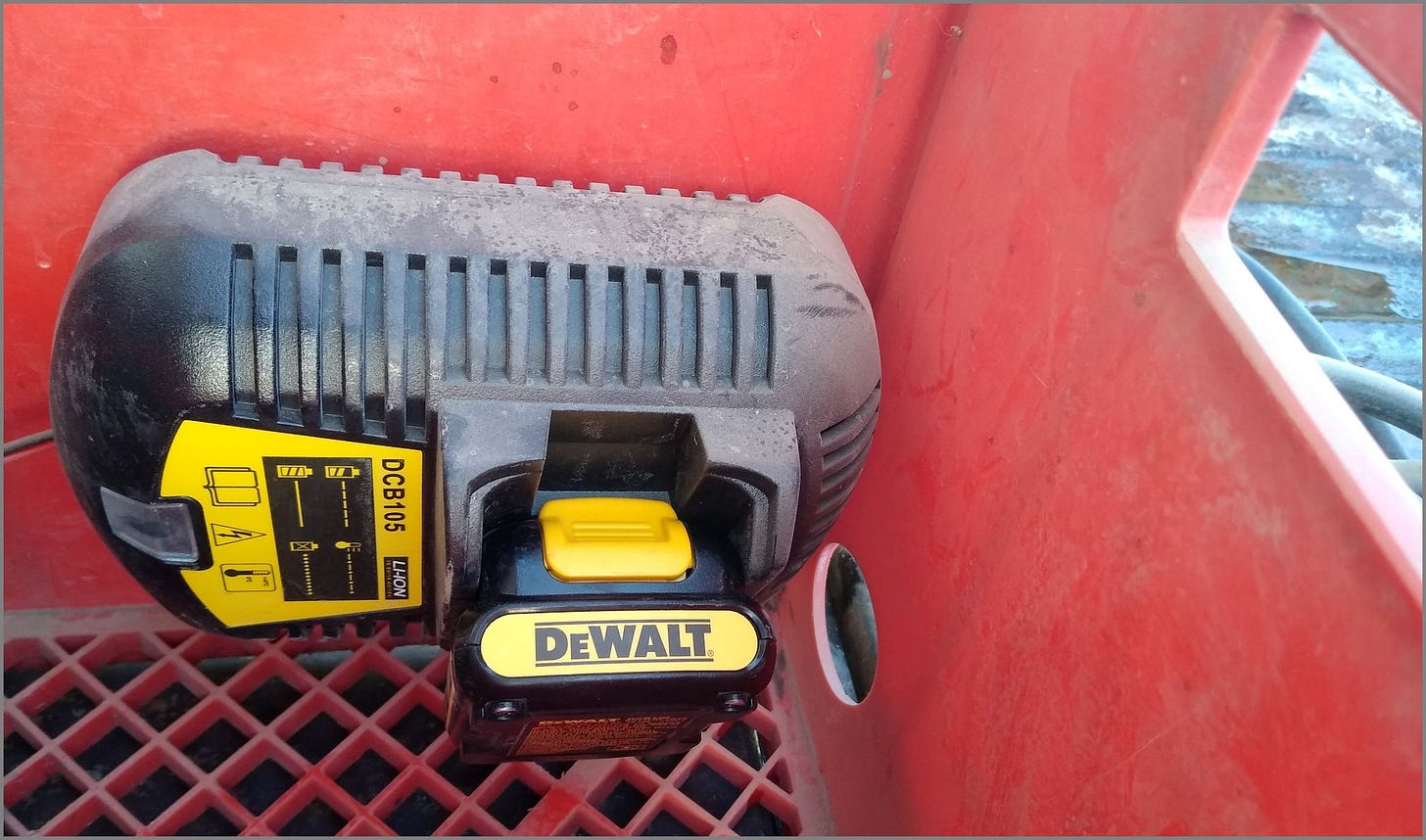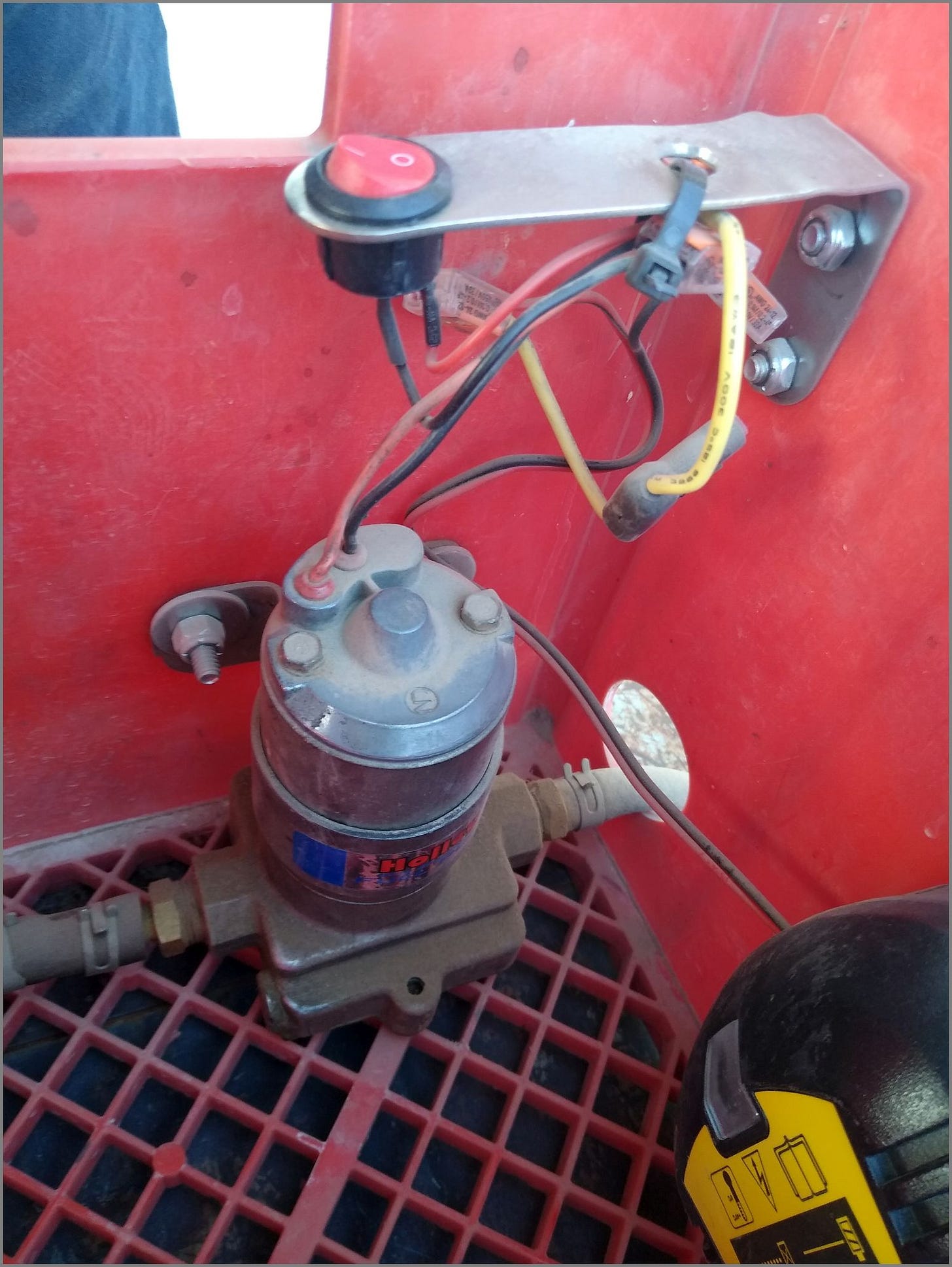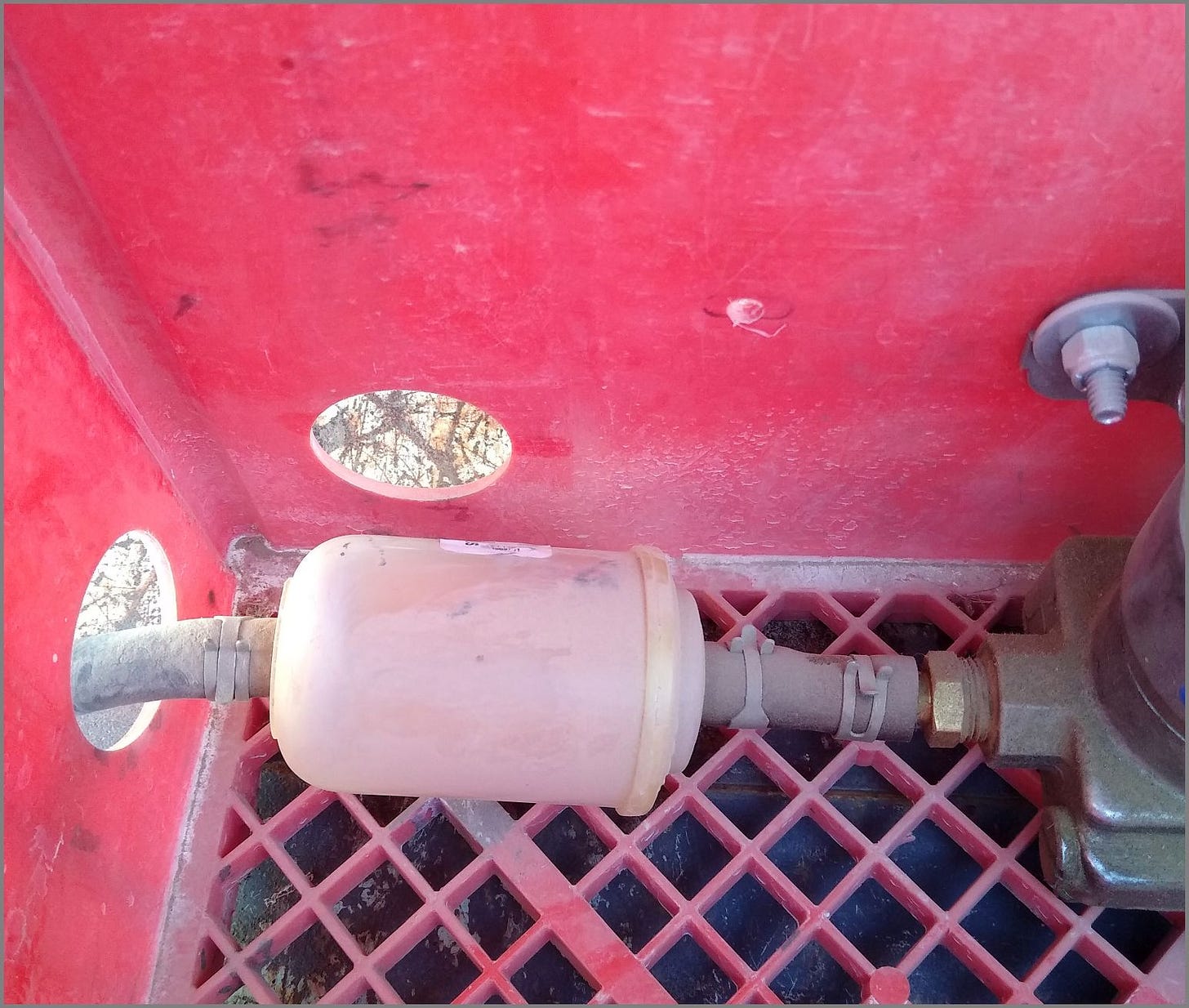(Thank you to reader RH for writing this and taking photos of the rig.)
Several years ago, I decided that if things ever went sideways, I needed to have the ability to get home from wherever I was on the road at the time. As I traveled extensively for work, I could be anywhere from Tucson to Las Vegas. At the furthest points, I would be ~250 miles from home. While I do carry 5-10 gallons of extra fuel in my truck, being forced to divert from the main roads to back roads would eat up that extra fuel fairly quickly.
I decided I needed the ability to acquire more gasoline without having to depend on gas stations. So, I built my own self-contained fuel transfer kit.
For the battery setup, I initially used a standard sealed lead acid battery from a computer power back-up unit, but it was very heavy and awkward to mount, plus there would be the issue of recharging it. Then I realized that I could use removable battery packs from my tools with the proper base adapter.
I bought an off-brand charger on eBay for $23 and stripped the electronics, as all I needed was the blade connectors to the battery pack and the 2 wires out: 12VDC and ground. This way, if the battery gets low, I can just swap it out with another one of the 4 batteries I keep in my truck. I also have a standard charging base and 120VAC inverter in my truck, so I can recharge the packs on the go. Keep in mind that this uses the 12V DeWalt batteries (you could do this with whatever brand you prefer, just ensure it’s the 12V version).
I used a Holley brand red electric fuel pump that I was lucky enough to find on Craigslist for $25 (you can also get these at any auto parts store). This pump can move up to 97 gallons of fuel per hour, or about 1.5 gallons per minute. While a faster pump would be ideal, this is fairly quick and the price was right. As you can see, I ran the hoses out the sides of the crate so this unit would sit in between the 2 tanks you are transferring fuel from and to.
As clean fuel is important, I also added an inline fuel filter to help remove any contaminants from the fuel.
I believe I used about 20’ of fuel line in total and I left more on the fuel “source” side in case I need to (ahem) push the line down a fuel filler neck of a car. Keep in mind that most newer vehicles have screens to prevent just such an occurrence, so you might have to cut the rubber filler neck or use other methods of acquiring the fuel.
A couple of final points:
I used an inline fuse to help protect the fuel pump, as you can see in the switch photo. I need to clean up the wiring a little to ensure it is secured.
If you were so inclined, you could use a quick disconnect on the fuel lines so that it stores easier, just remember that after use, there is some fuel remaining in the lines, so you’ll want a method to plug the hoses to prevent leakage.
I have used this pump to transfer fuel between gas cans, fill the lawn mower, etc. and it works well. Hopefully I’ll never need to use it for what I designed it for, but driving is a lot better than walking.
Stay safe out there!






